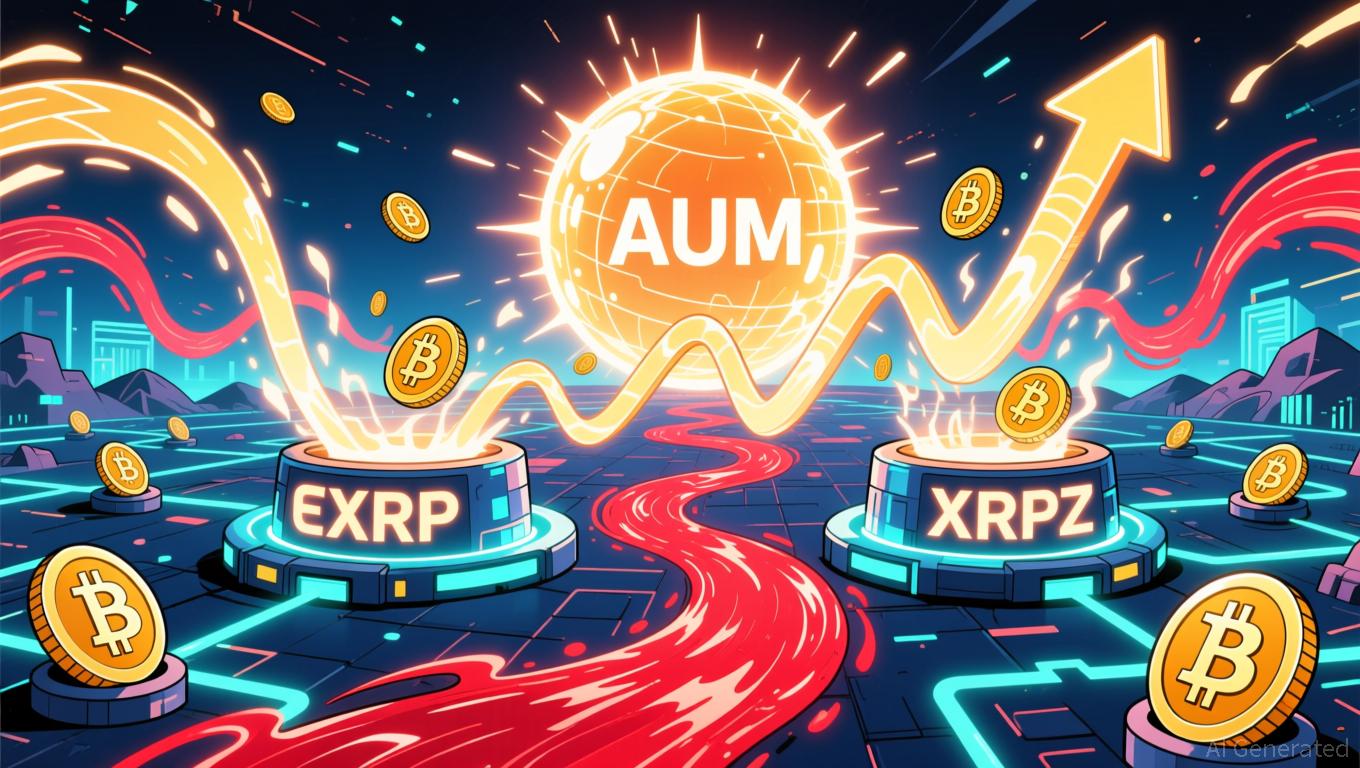In just one day, XRP ETFs have accumulated close to 80 million tokens, reflecting a notable increase in both institutional and retail interest that is transforming the altcoin’s market landscape. These swift inflows have driven total assets under management (AUM) to $778 million,
surpassing the initial results
of Solana’s recent ETF introduction and taking place as
Bitcoin
saw net outflows. Leading the movement were Grayscale’s GXRP and Franklin Templeton’s
XRPZ
,
attracting $67.4 million and $62.6 million
respectively on their first day of trading. The strong debut of these ETFs has fueled investor optimism, with experts suggesting that ongoing inflows could support a long-term price rebound and alter the market’s structure.
The
XRP
ETF boom is part of a larger wave of institutional involvement, with four XRP-centric ETFs now available in the U.S.
Canary’s XRPC
and Bitwise’s XRP ETF have further strengthened the sector,
with total net inflows topping $331 million
and $168 million, respectively. These offerings are not only tightening the available supply but also reflecting growing trust in XRP’s role as a cross-border payments tool.
XRP proponent Chad Steingraber
pointed out that each ETF share typically represents 10–20 tokens, which could intensify price action through heightened demand and FOMO effects.
Chart analysis indicates
that XRP’s outlook remains cautious. Although the token has climbed back to $2.24 after rebounding from major support, it still trades below key exponential moving averages (EMAs), suggesting a bearish technical stance.
Surpassing $2.28 could open the way to $2.50
, but continued inflows will be essential to confirm a fundamental shift.
Exchange holdings have fallen by 73 million tokens
within a day, indicating active accumulation and shrinking liquidity on exchanges.
This pattern is consistent with broader economic signals
that point to bullish momentum, such as the $164 million in ETF inflows recorded on Nov. 24.
Regulatory developments have played a pivotal role.
Ripple’s $125 million settlement with the SEC
in May 2025 cleared legal obstacles, paving the way for firms like Franklin Templeton and Grayscale to introduce spot ETFs.
These offerings, including Grayscale’s introductory zero-fee period
and Franklin Templeton’s 0.19% fee, highlight the increasing institutional appetite for XRP. At the same time,
21Shares’ TOXR ETF, launching Nov. 29
, is anticipated to further broaden the market.
The strong ETF performance stands in stark contrast
to Bitcoin’s $151 million in outflows during the same timeframe, underscoring a shift in investment focus toward alternative coins.
Investors remain split on the best way to gain exposure. While ETFs provide ease of access and liquidity,
detractors claim they do not offer direct asset control
and come with management fees. On the other hand, holding XRP directly gives full utility and potentially lower long-term expenses, but involves handling custody and tax issues.
Analysts such as David Mann from Franklin Templeton
stress that ETFs help broaden access to XRP’s infrastructure-driven applications, especially for cross-border payments.
With XRP ETFs gaining momentum, the altcoin’s price direction will depend on continued inflows and overall market sentiment. As regulatory barriers diminish and institutional involvement grows, XRP’s strengths—like fast, low-cost transactions—could help it secure a leading role in the changing crypto environment.
